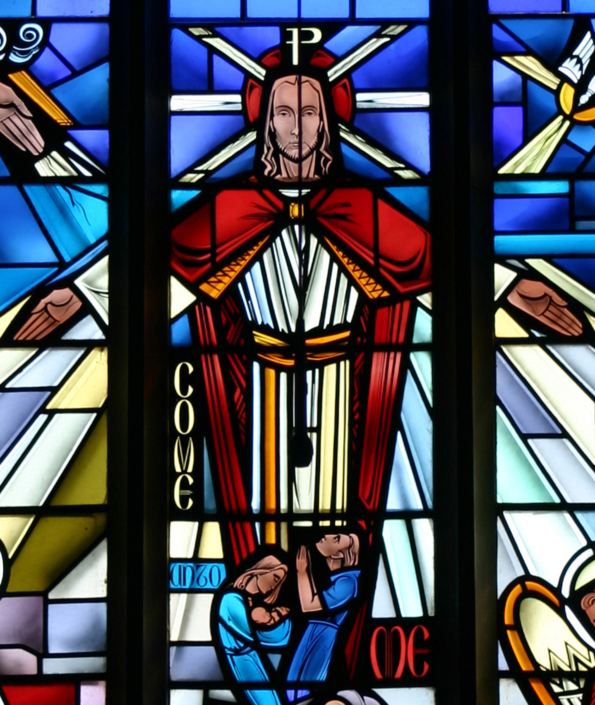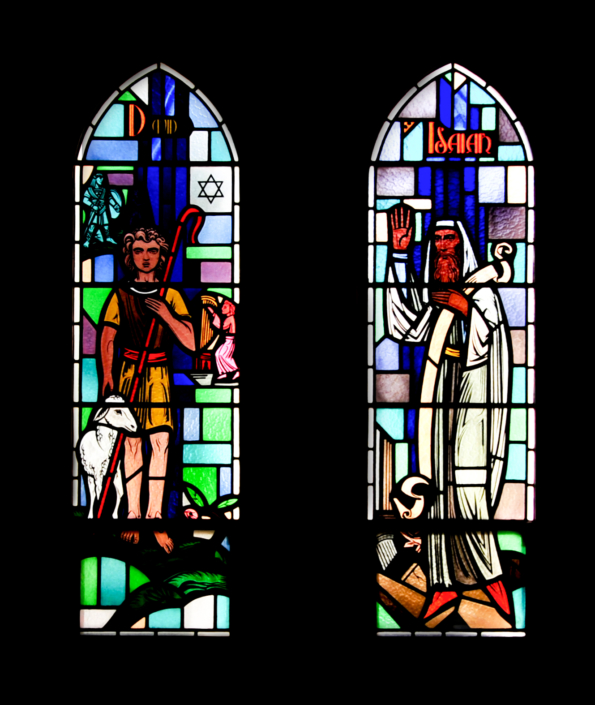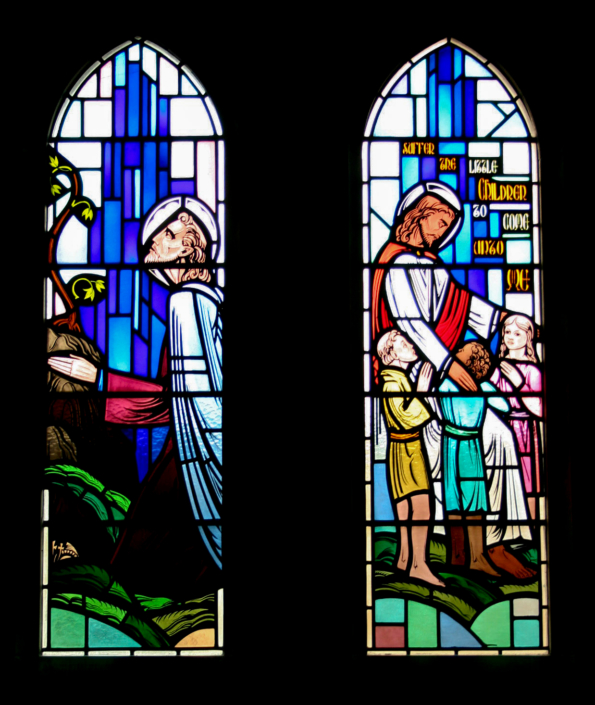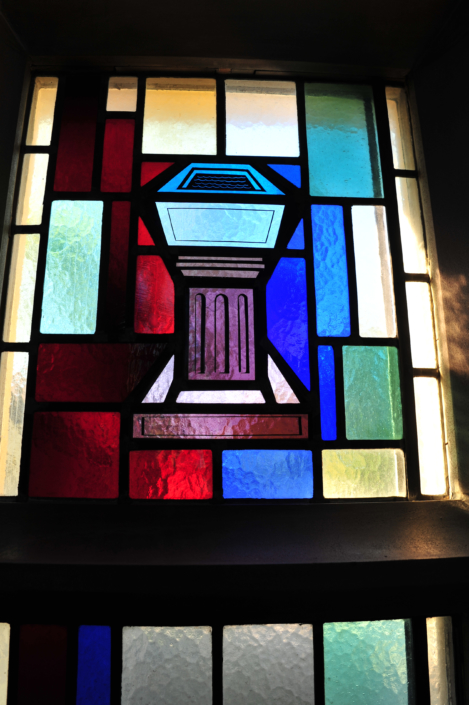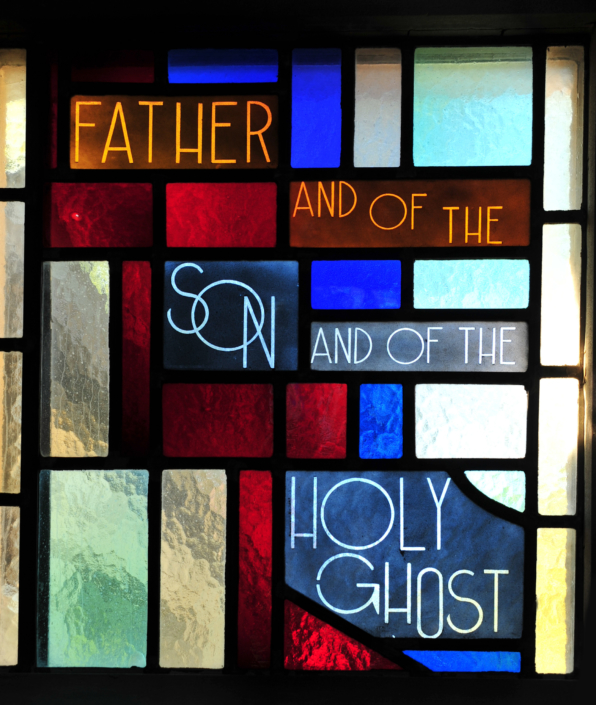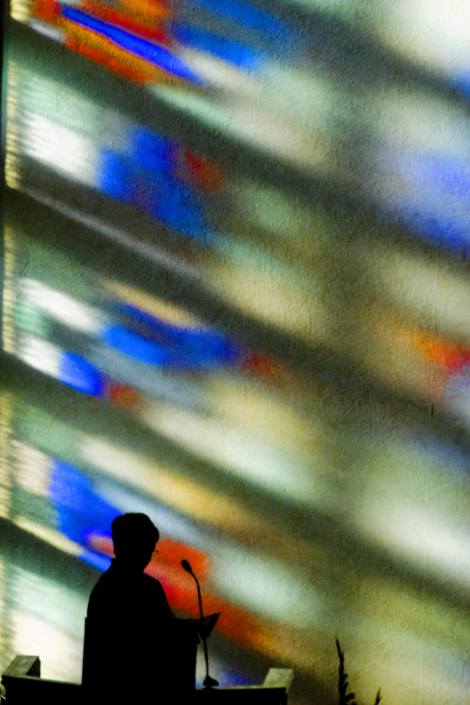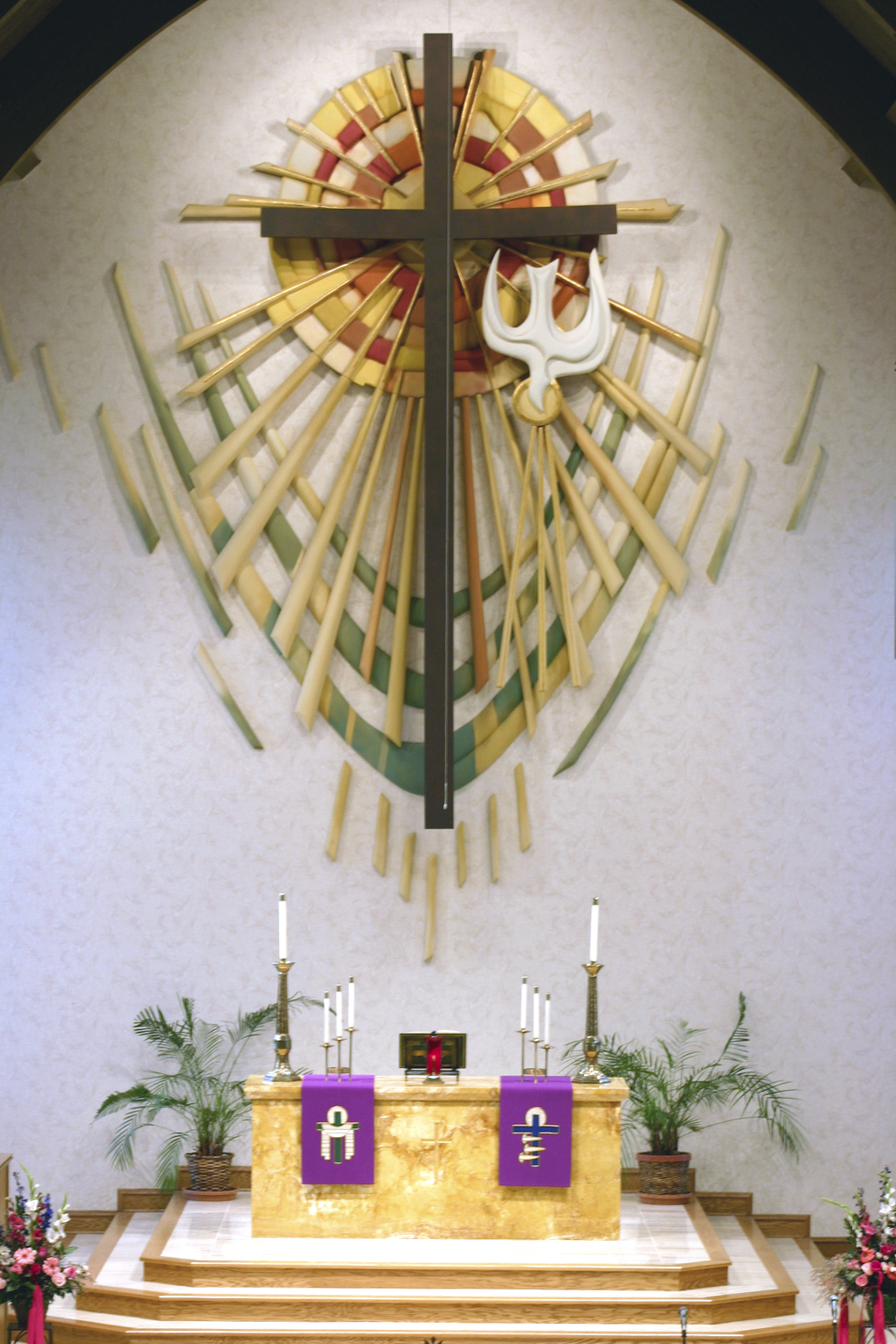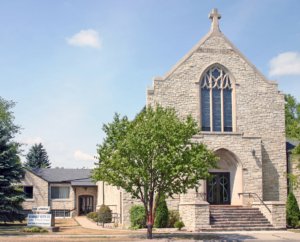Sanctuary Art
When worshippers gather at Zion, they are surrounded by an array of “silent sermons” witnessing to the faith we profess. The windows were installed in the 1950’s when the sanctuary was built. The artist who designed the windows, Eugene Margraff, came from Germany and worked for the Conway Studio for many years.
To the right and to the left of the altar, the sacraments of Baptism and Holy Communion are given their place of honor.
On the South wall of the Nave, one can witness characters of the Old Testament.
On the North wall, one can trace the story of Jesus from the Annunciation to the Resurrection. And if you lift your eyes to the clerestory windows above, you will identify the words of the Lord’s Prayer and the Apostles Creed. As you leave the sanctuary, look up and you will be the recipient of the resurrected Christ’s blessing.
If you walk the stairs to the choir loft, you will find yourself face to face with a witness to our Lutheran heritage.
As you move into the lounge on the Northeast corner of the educational unit, you will discover a striking image of the four Evangelists, Matthew, Mark, Luke and John.
History
Zion’s windows are unique. Whereas stained glass made in the United States is machine rolled, the glass in Zion’s windows is mouth-blown European glass, coming from either France or Germany. As a result of this method, small bubbles can be seen in the glass. The painted work, or shading, is done by using ground glass, mixing it with oil and fusing it onto the glass piece at 1300 degrees Fahrenheit.
Rev. Walter Pedersen, Zion’s pastor from 1943-1961, selected and arranged for the purchase of the windows, which were designed, manufactured, and assembled at the Conway Universal Studio of Stained Glass in Winona, Minnesota.
Mr. Larry Conway of the Conway glass studio estimated that at the time the windows were installed, the cost was $10 a square foot. Today he estimated they would cost $275 a square foot, a total cost of $15,000, but who can place a cost on the treasures of faith that they depict? Our thanks to those who made it possible.
The Chancel Sculpture
The chancel sculpture was a major part of the 1999 renovation of the sanctuary. Designed by Potente & Associates of Kenosha, Wisconsin, it bears a silent witness of the God who breaks into our world in Christ to all who worship here.
Though not exclusively, the sculpture is reminiscent of the Baptism of Jesus. What is perhaps most familiar as we look at it, is the image of the dove, the mark of the Spirit of God. The sunburst represents the splendor of the living God breaking into our world. The heavens have been opened and the Kingdom of God is at hand. The curved lines in the background make it unmistakable. God is answering our prayers. He is coming down. He is tearing open the heavens to be an Emmanuel, a God with us.
In the center of the sculpture hangs the large cross, symbolic of the gift of salvation and grace gifted to all Christians by their savior, Jesus Christ.
Below the sculpture is the altar from which the bread and wine of Holy Communion is served. The sculpture serves to remind the community of faith, that as it gathers around the table of the Lord, He continues to break into our world in these common, ordinary elements to be present among His people.
The dominant cross superimposed over the entire sculpture reminds us of the shape of His intervention.


